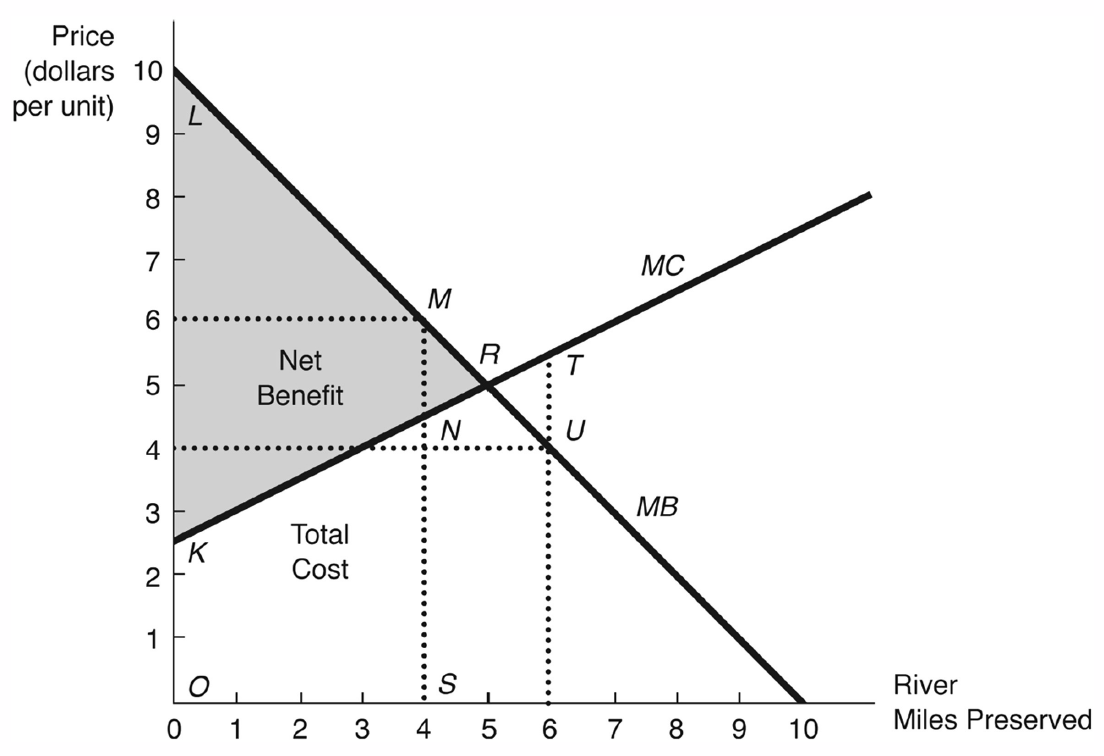Lecture 8
Evaluating Trade-Offs: Benefit–Cost Analysis and Other Decision-Making Metrics
September 13, 2024
Benefit–Cost Analysis and Other Decision-Making Metrics
Normative Criteria for Decision Making for Environmental and Natural Resource Economics
- Positive Economics: Describing what is, what was and what will be.
- Normative Economics: Attempting to answer what ought to be.
- Normative analysis might be used, for example, to evaluate the desirability of a proposed new pollution control regulation or a proposal to preserve an area currently scheduled for development.
- Benefits and costs in economics are measured from a human-centered perspective.
- This anthropocentric approach does not ignore ecosystem effects, as humans value environmental preservation.
Normative Criteria for Decision Making
Evaluating Predefined Options: Benefit–Cost Analysis
Let \(B\) be the benefits from a proposed action and \(C\) be the costs.
- Our decision rule would then be:
- If \(B > C\), support the action
- Otherwise, oppose the action
- Our decision rule would then be:
Total benefits are the value of total willingness to pay, which is the area under the market demand curve from the origin to the allocation of interest.
Opportunity cost is the net benefit lost when specific environmental services are forgone in the conversion to the new use: the marginal opportunity cost curve.
Total costs are measured by the area under the marginal opportunity cost curve.
Normative Criteria for Decision Making
Evaluating Predefined Options: Benefit–Cost Analysis

- Should the 4-mile stretch stretch of river be preserved?
Normative Criteria for Decision Making
Finding the Optimal Outcome
- The process of finding optimal outcomes in environmental and resource economics involves three steps:
- Identify the optimal outcome
- Compare actual outcomes to the optimal, and identify reasons for divergences
- Which institutions would produce optimal outcomes?
- What are the behavioral sources of the divergences?
- Design policy solutions based on the problem’s nature and causes
- This approach is applied to various environmental and natural resource issues.
Normative Criteria for Decision Making
Finding the Optimal Outcome: Examples
- Depleted ocean fisheries:
- Define optimal stock or harvest rate
- Compare to actual levels
- Understand reasons for excessive exploitation
- Develop solutions based on this understanding
- GHG emissions and climate change:
- Determine optimal warming threshold (1.5°C)
- Compare current emissions to optimal levels
- Identify behavioral sources of the problem
- Propose economic solutions
Normative Criteria for Decision Making
Relating Optimality to Efficiency
Optimal policies maximize net benefits (benefits minus costs)
Static efficiency is achieved when economic surplus is maximized
Efficient outcomes are also optimal outcomes
Normative Criteria for Decision Making
Relating Optimality to Efficiency

- What is the optimal level of preservation?
Normative Criteria for Decision Making
Relating Optimality to Efficiency
- First Equimarginal Principle (the “Efficiency Equimarginal Principle”):
- Net benefits are maximized when the marginal benefits from an allocation equal the marginal costs.
- Pareto optimality:
- Allocations are said to be Pareto optimal if no other feasible allocation could benefit at least one person without harming some other person.
- Allocations that do not satisfy this definition are suboptimal.
- Efficient allocations are Pareto optimal.